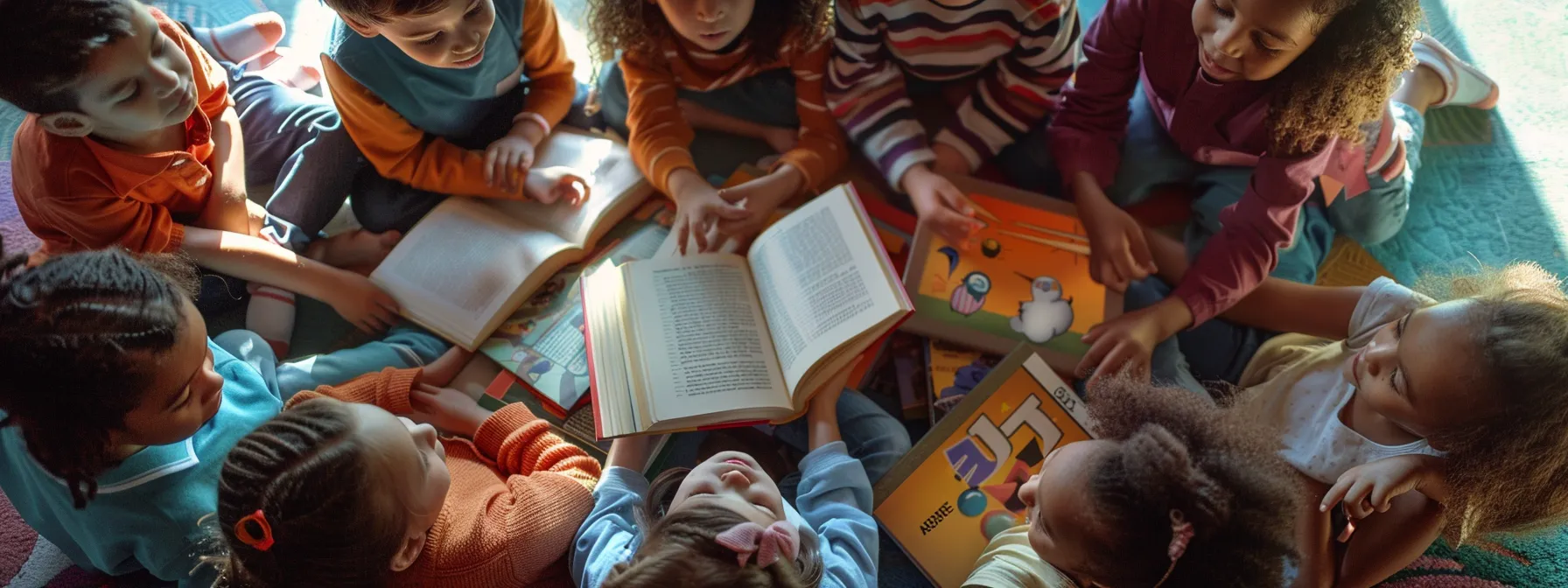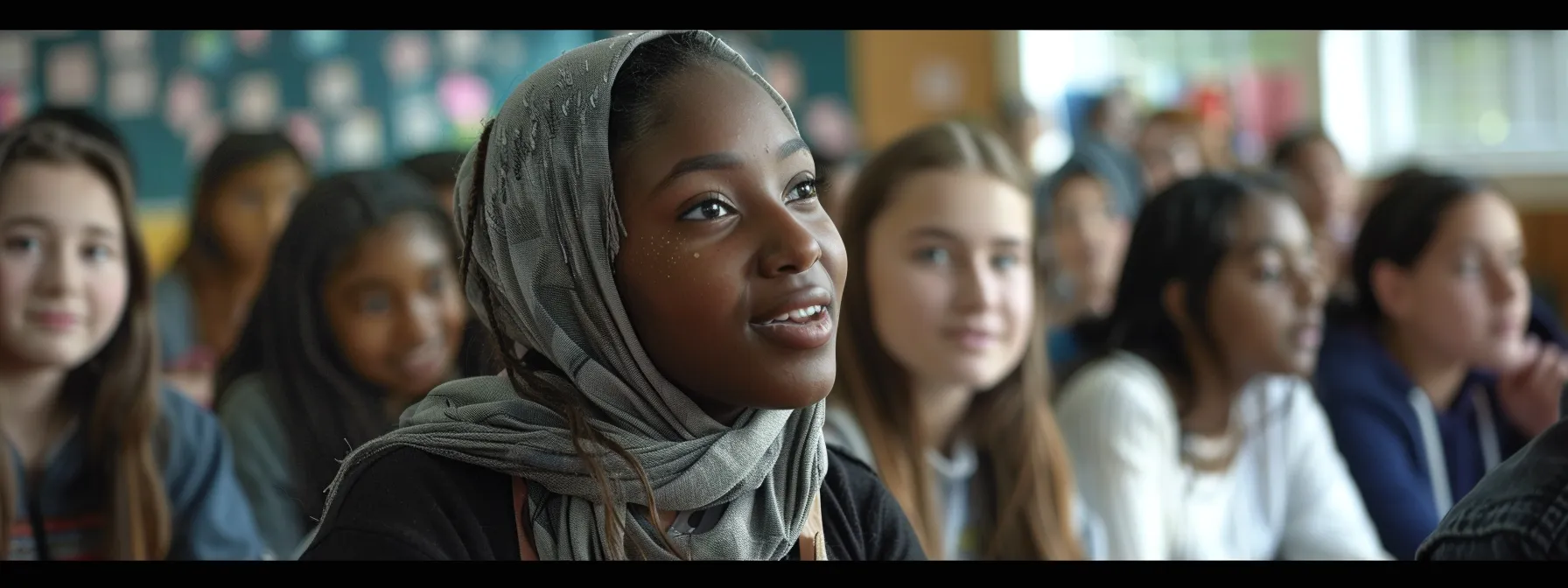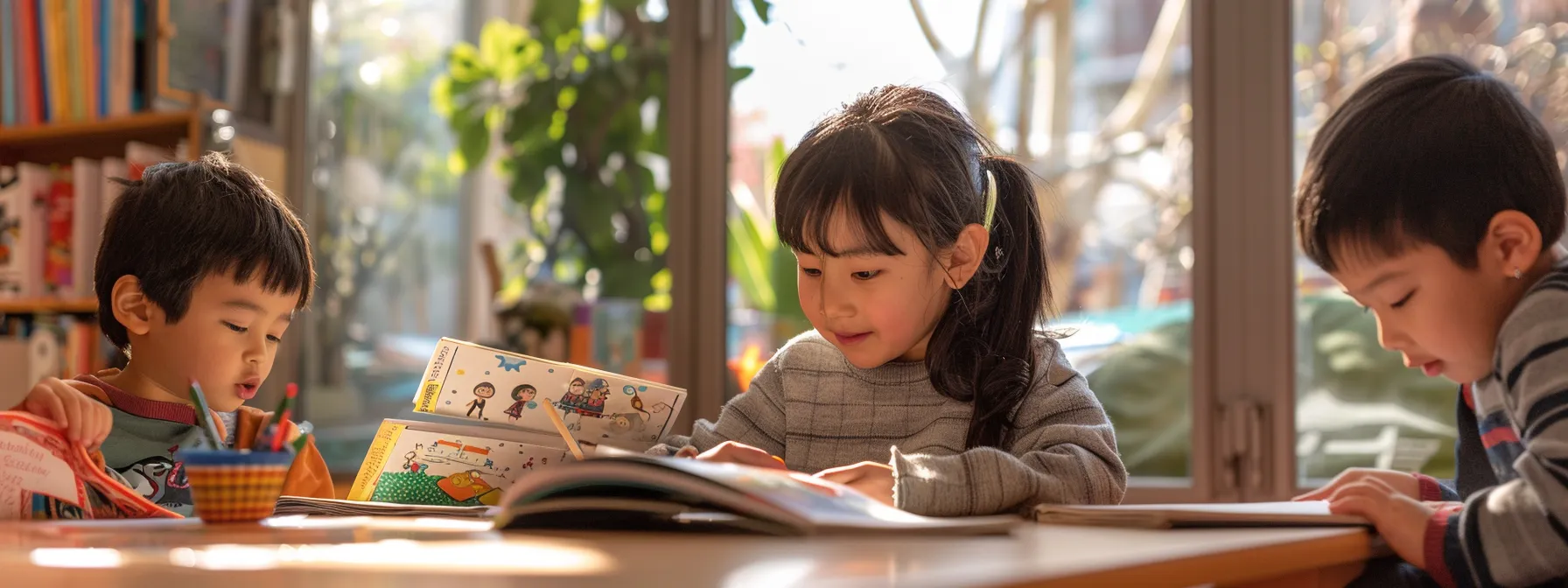
Fostering Understanding: Teaching Children About Inclusion Through Reading

Fostering Understanding: Teaching Children About Inclusion Through Reading
Special Steps, through its blog and products list, champions the cause of inclusion for children with special needs. By selecting and sharing inclusive books, we create diverse learning experiences that benefit all children, from phonics to understanding complex social concepts. Our approach emphasizes the importance of sequence in storytelling, helping children grasp the flow of events and relate them to real-life situations. In this article, we'll explore practical ways to foster understanding and promote inclusion through reading, both at home and in the classroom. Keep reading to discover engaging activities and valuable resources that will help you create a more inclusive environment for all children.
Key Takeaways
Inclusive literature fosters empathy and broadens children's perspectives on diversity
Engaging children in selecting and discussing diverse books enhances their understanding of inclusion
Role-playing and creative activities reinforce inclusive messages from stories
Thoughtful discussions after reading help apply inclusion concepts to real-life situations
Online resources and awards provide guidance for finding quality inclusive children's literature
Selecting Inclusive Books for Diverse Learning Experiences

You play a crucial role in shaping children's understanding of the world through the books you choose on the Special Steps products list. By carefully selecting inclusive literature, you create opportunities for diverse learning experiences that positively impact language acquisition, cognition, and social awareness. Whether a child has dyslexia or excels in reading, these books provide valuable insights and foster empathy. As you explore titles that celebrate diversity, feature characters from various backgrounds, represent different abilities, and challenge stereotypes, you'll receive positive feedback from young readers eager to learn about the world around them. Your thoughtful choices can spark meaningful discussions and broaden children's perspectives on inclusion.
Identify Themes That Celebrate Diversity
As a teacher, you have the power to shape young minds through carefully chosen books that celebrate diversity. Look for themes that showcase different cultures, abilities, and family structures, helping preschool children develop a broader understanding of the world. This approach aligns with modern educational policy and neuroscience findings on early childhood development. Check out the Special Steps products list.
When selecting books, prioritize those that provide accurate and respectful information about various groups and individuals. Choose stories that challenge stereotypes, promote empathy, and encourage children to appreciate differences. Here are some key themes to consider when selecting inclusive books from the special steps blog:
Cultural diversity and traditions
Different family structures
Varying abilities and disabilities
Gender equality and expression
Racial and ethnic diversity
Socioeconomic differences
Multilingualism and language diversity
Look for Characters From Various Backgrounds
You'll find that books featuring characters from diverse backgrounds offer children valuable windows into different experiences. By presenting a range of ethnicities, abilities, and family structures, these stories help young readers develop empathy and understanding. As a psychologist might suggest, exposure to varied perspectives through literature can significantly impact a child's social and emotional growth.
When selecting books, look for those that authentically represent various cultures and lifestyles. Consider stories that showcase scientists, artists, or everyday heroes from different backgrounds. This approach not only broadens children's worldviews but also provides role models for children who may not often see themselves represented in mainstream media. Here's a table illustrating the benefits of diverse character representation:
Benefit Impact on Children
Increased Empathy Helps children understand and relate to different experiences
Broader Worldview Exposes children to various cultures and lifestyles
Positive Self-Image Allows children to see themselves represented in stories
Reduced Stereotyping Challenges preconceived notions about different groups
Ensure Representation Across the Spectrum of Abilities
You'll find that books featuring characters with diverse abilities offer valuable insights for young readers. By including stories that portray individuals with disabilities in a positive light, you help children develop empathy and understanding. Look for books that showcase characters with various physical, intellectual, or developmental differences engaged in everyday activities or overcoming challenges.
When selecting books, consider those that use appropriate language and imagery to depict disability. Seek out stories that go beyond stereotypes, focusing on the strengths and unique perspectives of characters with disabilities. This approach helps children recognize that disability is a natural part of human diversity, fostering a more inclusive mindset from an early age.
Choose Stories That Challenge Stereotypes
You can elevate children's understanding of inclusion by selecting stories that challenge stereotypes. These books will expand their vocabulary and improve their reading skills while fostering a more inclusive mindset. By exposing children to diverse characters in non-traditional roles, you help counteract the Matthew effect, where strong readers get stronger and weaker readers fall behind.
Choose books that portray characters from various backgrounds excelling in different fields, such as science, sports, or the arts. This approach not only challenges stereotypes but also promotes better health outcomes by reducing stress associated with feeling different or misunderstood. As you read these stories with children, discuss how the characters defy expectations, encouraging critical thinking about societal norms.
Dive into the world of inclusive reading at home, where every child can feel seen and heard. Transform your living space into a welcoming literary haven that celebrates diversity and fosters a love for learning.
Creating an Inclusive Reading Environment at Home

You play a pivotal role in shaping your child's understanding of inclusion through reading. By creating an inclusive reading environment at home, you lay the foundation for phonological awareness and semantic understanding, key components highlighted by the National Reading Panel. As Marie Clay's research suggests, children learn best when actively engaged in the reading process. Involving them in book selection, setting up a cozy reading space, and demonstrating inclusivity through your reactions all contribute to mastering the alphabetic principle. Encourage questions and open conversations to deepen comprehension and foster a love for diverse stories. This approach not only enhances reading skills but also nurtures empathy and acceptance in your young learners.
Involve Children in Choosing Books
You can boost your child's language development and understanding of inclusion by involving them in the book selection process. Let your child browse through diverse titles, encouraging them to pick stories that pique their interest while gently guiding them towards books that represent various cultures, abilities, and perspectives.
This hands-on approach helps children grasp the concept of diversity and reinforces their connection to the writing system. As they encounter different orthographies and writing styles, they'll develop a broader appreciation for the richness of human expression and experiences.
Set Up a Cozy, Welcoming Reading Space
You'll create a cozy reading nook that captures your child's attention and fosters a love for diverse fiction. Choose a quiet corner, add soft cushions, and display inclusive books at eye level to make sight words easily accessible, as Linnea Ehri's research emphasizes the importance of visual cues in early reading development.
Evidence shows that a welcoming environment encourages children to engage with books more frequently. Decorate the space with multicultural artwork or posters featuring characters from various backgrounds to reinforce the message of inclusion and make every child feel represented in the reading experience.
Demonstrate Inclusivity Through Your Reactions and Discussions
You enable children to develop a deeper understanding of inclusion through your reactions and discussions during reading time. By asking open-ended questions about diverse characters and situations, you encourage critical thinking and empathy. This best practice helps children connect the letters on the page to real-world experiences, fostering a more inclusive mindset.
Your positive responses to inclusive images and stories create a welcoming atmosphere for learning. As you discuss different perspectives, you model respectful language and attitudes, reinforcing the importance of acceptance. This approach not only enhances reading comprehension but also cultivates social awareness, preparing children for diverse interactions in their daily lives:
Discussion Topic Benefit
Character Differences Promotes empathy and understanding
Diverse Situations Broadens worldview and cultural awareness
Inclusive Language Develops respectful communication skills
Challenging Stereotypes Encourages critical thinking
Encourage Questions and Open Conversations
You'll foster a deeper understanding of inclusion by encouraging questions and open conversations during reading time. This approach helps children develop memory skills as they recall and discuss diverse characters and situations, while also improving their ability to form coherent sentences. For children on the autism spectrum, these dialogues can be particularly beneficial in developing conversational skills.
Create a safe space where children feel comfortable asking about differences they encounter in books. You might set up an email address where they can submit questions privately if they're hesitant to ask in person. This method allows for thoughtful, age-appropriate responses that can spark meaningful conversations about inclusion and diversity.
Let's step beyond the home and into the classroom, where inclusive reading takes on new dimensions. Discover how educators can create a vibrant, accepting space for all students through carefully chosen books and engaging activities.
Incorporating Inclusive Reading in the Classroom Setting

You can create an inclusive classroom environment through thoughtful reading selections and activities. By diversifying your library, organizing themed reading circles, incorporating multilingual books, and using storytelling to foster empathy, you'll help students develop a deeper understanding of inclusion. These approaches align with the National Assessment of Educational Progress guidelines, emphasizing the importance of diverse literacy experiences. As you introduce symbols and concepts from various cultures, you'll enhance English language learning while promoting cultural awareness. Consider creating a classroom podcast where students discuss inclusive books, reinforcing key ideas and improving their communication skills. Remember, each paper, book, or story you share becomes a powerful tool for shaping young minds and promoting acceptance.
Diversify Your Classroom Library
You'll enhance your students' metacognition and spoken language skills by diversifying your classroom library. Include books that represent various cultures, abilities, and family structures to broaden your students' knowledge and understanding of the world around them.
By offering a wide range of inclusive literature, you'll tap into the psychology of learning, helping students develop empathy and critical thinking skills. This approach also supports vowel recognition and phonemic awareness across different languages and dialects. Consider organizing your library into themed sections to make it easier for students to explore diverse topics:
Cultural celebrations and traditions
Abilities and disabilities
Family structures
Historical figures from diverse backgrounds
Environmental stewardship across cultures
Organize Reading Circles Around Inclusion Themes
You'll enhance phonemic awareness and visual memory by organizing reading circles around inclusion themes. These small group discussions allow students to explore diverse perspectives while developing critical thinking skills. As you guide conversations about characters from different backgrounds, you'll reinforce educational psychology principles that emphasize the importance of social learning.
Incorporate tutoring techniques within these circles to support students who may be at risk of falling behind in their reading skills. By selecting books that challenge stereotypes and promote understanding, you create a safe space for children to ask questions and share their own experiences. This approach not only improves reading comprehension but also fosters empathy and inclusivity in the classroom:
Choose books featuring diverse characters and experiences
Prepare discussion questions that encourage critical thinking
Rotate group members to expose students to different perspectives
Use visual aids to support comprehension and engagement
Encourage students to make personal connections to the stories
Include Books in Different Languages
You'll enrich your classroom's linguistic landscape by including books in different languages. This approach provides context for language development, exposes children to diverse phonemes, and enhances their understanding of global cultures through storytelling.
By incorporating multilingual books, you create opportunities for cross-cultural education and foster an inclusive environment. Children develop an appreciation for language diversity, which supports their cognitive flexibility and prepares them for an increasingly interconnected world.
Use Storytelling to Foster Empathy
You'll enhance word recognition and reading comprehension by using storytelling to foster empathy in your classroom. Share narratives that showcase diverse experiences, allowing students to connect with characters from different backgrounds and develop a deeper understanding of inclusion.
Incorporate stories from the United Kingdom and other cultures to broaden students' perspectives and improve their pronunciation skills. Use science-based approaches to storytelling that engage multiple senses, helping children internalize the lessons of empathy and inclusivity while strengthening their overall literacy abilities.
Bring inclusive reading to life with interactive activities! These engaging exercises will captivate young minds and reinforce the message of acceptance.
Engaging Activities to Accompany Inclusive Reading Sessions

You can enhance children's understanding of inclusion through engaging activities that complement your reading sessions. By tapping into cognitive science principles, you'll develop their skills in empathy, critical thinking, and creative expression. An expert approach involves diverse activities like role-playing book characters, reimagining story endings, hosting inclusive book clubs, and creating artwork inspired by inclusive narratives. These hands-on experiences reinforce new vocabulary, support noun recognition, and strengthen alphabet knowledge. As you guide children through these activities, you'll foster a deeper appreciation for diversity and inclusion, making abstract concepts tangible and memorable.
Role-Playing Based on Book Characters
You'll enhance children's understanding of inclusion through role-playing activities based on book characters. This approach, supported by research in balanced literacy, helps students internalize diverse perspectives and develop empathy. By embodying characters from inclusive stories, children improve their syllable awareness and overall reading comprehension.
Incorporate role-playing into your curriculum to reinforce Timothy Shanahan's emphasis on explicit instruction in reading skills. As students act out scenarios from inclusive books, they practice fluency, expression, and social-emotional skills. This multisensory approach supports deeper engagement with the text and promotes lasting understanding of inclusive themes:
Choose characters that represent diverse backgrounds and abilities
Provide simple props or costumes to enhance immersion
Guide students in exploring characters' motivations and feelings
Encourage reflection on how the role-play experience changed their perspectives
Connect role-play scenarios to real-life situations to promote transfer of learning
Draw or Write a New Story Ending
You'll boost children's creativity and critical thinking skills by encouraging them to draw or write new story endings for inclusive books. This activity enhances spelling abilities and phonological awareness as children create their own narratives. By reimagining story conclusions, students engage with the whole language approach championed by Ken Goodman, developing a deeper understanding of inclusive themes.
Encourage fluency by having children share their alternative endings with classmates. This practice not only improves their oral reading skills but also exposes the group to diverse perspectives and solutions. As students present their ideas, they'll reinforce the inclusive messages from the original story while developing their own voice:
Read an inclusive story together
Discuss the current ending and its impact
Brainstorm alternative outcomes that promote inclusion
Allow time for individual creation (writing or drawing)
Share and celebrate diverse story endings
Host an Inclusion-Themed Book Club
You'll create a dynamic learning environment by hosting an inclusion-themed book club for children. This approach aligns with the simple view of reading, emphasizing both decoding and language comprehension skills while fostering a sense of community and shared understanding.
Encourage confidence in young readers by selecting books that represent diverse experiences and facilitating open discussions. This inclusive approach, inspired by programs like Reading Recovery, supports American Public Media's mission to promote literacy and understanding, creating a positive cycle of learning and personal growth.
Create Artwork Inspired by Stories of Inclusion
You'll inspire children to express their understanding of inclusion through art, fostering literacy and language skills in the process. By creating visual representations of inclusive stories, students develop a deeper awareness of diverse experiences, much like New Zealand's approach to multicultural education.
Encourage your students to use various art mediums to depict scenes or characters from inclusive books, promoting community engagement and cultural sensitivity. This creative outlet allows children to process and internalize the messages of inclusion, reinforcing their understanding while developing fine motor skills essential for early writing development.
Inclusive reading sessions spark curiosity and open hearts. Now, let's explore how to nurture those budding conversations and deepen understanding.
Guiding Conversations on Inclusion Following a Reading Session

You'll deepen children's understanding of inclusion by guiding thoughtful conversations after reading sessions. This approach aligns with Common Core standards and enhances syntax development, supporting students with reading disabilities. Prepare discussion questions that encourage critical thinking and personal connections to the story's themes. Create a safe space for sharing personal experiences related to inclusion, fostering empathy and broadening perspectives. Highlight the lessons learned from characters' experiences, helping children apply these insights to real-life situations. Extend the conversation beyond the book, discussing how inclusivity applies in various contexts. This comprehensive approach, inspired by Heinemann's educational philosophies, develops children's speech and comprehension skills while nurturing a more inclusive worldview.
Prepare Discussion Questions in Advance
You'll enhance your students' understanding of inclusion by preparing thoughtful discussion questions in advance. By crafting questions that prompt critical thinking about the book's themes, you'll engage children's brains in deeper analysis of concepts like poverty and diversity in school settings.
Consider Keith Stanovich's research on reading comprehension when formulating your questions. Focus on queries that encourage students to make connections between the story and their own experiences, fostering empathy and broadening their perspectives on inclusion.
Encourage Sharing Personal Stories Related to the Theme
You'll foster a deeper understanding of inclusion by encouraging students to share personal stories related to the theme. This approach taps into the power of linguistics, allowing children to connect their own experiences with the concepts presented in the book, making abstract ideas more concrete and relatable.
As students learn to express their thoughts and feelings about inclusion, they develop important language skills that will serve them well beyond kindergarten. By creating a safe space for sharing, you help children build empathy, broaden their perspectives, and recognize the value of diverse experiences in their own lives and communities.
Highlight Lessons Learned From the Characters' Experiences
You'll reinforce key lessons about inclusion by highlighting the characters' experiences from the story. Draw attention to moments where characters demonstrated empathy, overcame challenges, or learned to appreciate differences. This approach helps children connect abstract concepts to concrete examples, deepening their understanding of inclusivity.
Guide students to reflect on how the characters' actions and decisions impacted others in the story. Encourage them to consider how they might apply these lessons in their own lives, fostering a sense of responsibility and empowerment in creating inclusive environments. This reflection process enhances critical thinking skills and promotes the transfer of learning from literature to real-world situations.
Discuss How Inclusivity Applies Outside of Reading
You'll help children apply inclusivity beyond books by discussing real-world scenarios. Encourage them to identify opportunities for inclusive behavior in their daily lives, such as on the playground, in the classroom, or at home. This approach reinforces the importance of treating everyone with respect and kindness, regardless of differences.
Guide students to recognize barriers to inclusion in their community and brainstorm solutions. By exploring practical applications of inclusivity, you'll empower children to become agents of positive change in their surroundings. This discussion can lead to meaningful action plans that promote a more inclusive environment for all:
Setting Inclusive Action Potential Impact
Playground Inviting a classmate with a disability to join a game Fostering friendships and breaking down barriers
Classroom Using inclusive language and avoiding stereotypes Creating a welcoming environment for all students
Home Learning about different cultures and traditions Developing respect and appreciation for diversity
Community Volunteering for organizations that support inclusivity Making a tangible difference in society
Discover a treasure trove of inclusive stories waiting to inspire young minds. Explore these resources to find children's books that celebrate diversity and foster understanding.
Resources to Find Inclusive Children's Literature
You'll find a wealth of resources to help you discover inclusive children's literature that can enrich your teaching and parenting experiences. By tapping into diverse sources, you'll expand your library with books that celebrate differences and promote understanding. From prestigious awards recognizing outstanding diverse literature to expert recommendations from librarians and booksellers, you'll have access to a wide range of quality inclusive books. Engaging with educational blogs, websites, and online communities dedicated to children's literature will keep you informed about the latest releases and best practices for teaching inclusion. These resources not only help you find appropriate books but also provide insights into effectively using them to foster empathy and acceptance in young readers.
Consult Awards for Diverse Children's Books
You'll discover exceptional inclusive literature by consulting awards for diverse children's books. These accolades, such as the Coretta Scott King Book Awards and the Stonewall Book Award, highlight outstanding works that authentically represent various cultures, identities, and experiences. By exploring these award-winning titles, you'll enrich your collection with high-quality books that celebrate diversity and promote understanding.
Incorporate these award-winning books into your reading sessions to expose children to diverse perspectives and foster empathy. The recognition these books receive often indicates their ability to engage young readers while addressing important topics related to inclusion. By referencing these awards, you'll ensure that the inclusive literature you choose meets high standards for both literary merit and representation.
Utilize Libraries and Bookstore Recommendations
You'll find valuable guidance on inclusive children's literature by tapping into the expertise of librarians and booksellers. These professionals often curate special collections or displays featuring diverse books, making it easier for you to discover titles that promote inclusion. Ask for personalized recommendations based on specific themes or age groups to enhance your reading program.
Explore your local library's online catalog or visit bookstores to browse their curated selections of inclusive literature. Many libraries and bookstores host events or reading groups focused on diversity and inclusion, providing opportunities to engage with other educators and parents interested in promoting these values through literature. By utilizing these resources, you'll expand your knowledge of available inclusive books and stay informed about new releases in this important genre.
Follow Inclusive Education Blogs and Websites
You'll stay up-to-date on the latest inclusive children's literature by following educational blogs and websites dedicated to this topic. These online resources often provide curated lists of diverse books, reviews, and practical tips for incorporating inclusive literature into your curriculum or home library.
Explore platforms like We Need Diverse Books, Reading Rockets, my webiste for my favorite books, and The Conscious Kid for regular updates on new releases, author interviews, and teaching strategies. By engaging with these communities, you'll gain valuable insights into best practices for promoting inclusion through reading and discover lesser-known titles that can enrich your inclusive literature collection. you can also check out my book here or my authors page here.
Engage With Online Communities and Forums on Children's Literature
You'll expand your knowledge of inclusive children's literature by engaging with online communities and forums dedicated to this topic. Platforms like Goodreads, Reddit's r/childrensbooks, and Facebook groups for teachers and librarians offer spaces to discuss and discover diverse books.
Participate in virtual book clubs or join webinars hosted by children's literature experts to deepen your understanding of inclusive storytelling. These interactive experiences allow you to connect with like-minded individuals, share recommendations, and gain insights into effectively using inclusive books in educational settings.
Conclusion
Reading inclusive literature empowers children to embrace diversity and develop empathy for others. By carefully selecting books that represent various backgrounds, abilities, and experiences, you create opportunities for meaningful discussions and broaden children's perspectives on inclusion. Engaging activities, such as role-playing and art projects, reinforce the lessons learned from inclusive stories and help children apply these concepts to real-life situations. Through thoughtful guidance and access to diverse resources, you can foster a generation of young readers who not only understand the importance of inclusion but actively promote it in their communities.